Blog
- Autism Biomarker for Boys Found
- By Jason von Stietz, M.A.
- April 29, 2016
-
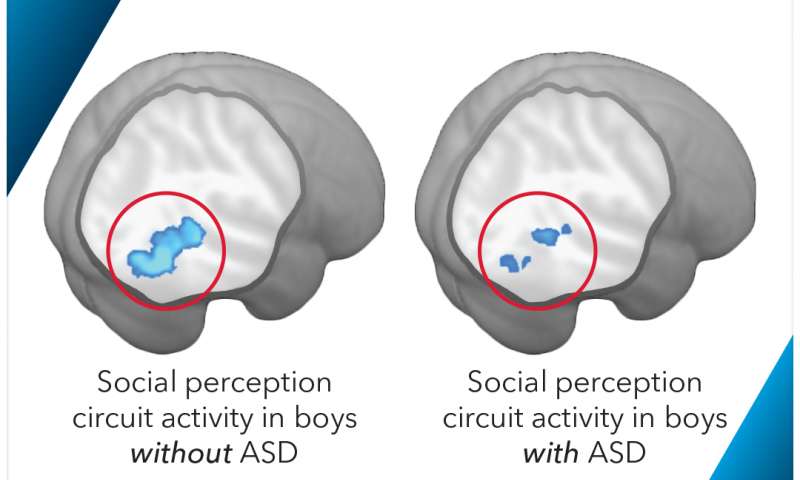
Credit: George Washington University Researchers at the George Washington University investigated the use of brain scans in measuring the progress of treatments for Autism Spectrum Disorder in boys. Findings indicated that a biomarker related to brain circuitry involved in social perception may assist in more quickly diagnosing and treating difficult to diagnose patients. The study was discussed in a recent article in Medical Xpress:
Researchers have developed a new method to map and track the function of brain circuits affected by autism spectrum disorder (ASD) in boys using brain imaging. The technique will provide clinicians and therapists with a physical measure of the progress patients are making with behavioral and/or drug treatments - a tool that has been elusive in autism treatment until this point.
For the first time, doctors would be able to quantify how that brain circuit is working in their patients and assess the effectiveness of an intervention. The research is outlined in a paper, "Quantified Social Perception Circuit Activity as a Neurobiological Marker of Autism Spectrum Disorder," published Wednesday in JAMA Psychiatry. The paper focuses on the use of biomarkers, measurable indicators of a biological condition, to measure the function of the social perception circuit of the brain.
"This is significant because biomarkers give us a 'why' for understanding autism in boys that we haven't had before," said Kevin Pelphrey, a co-author of the paper, who is the Carbonell Family Professor in Autism and Neurodevelopmental Disorders and director of the Autism and Neurodevelopmental Disorders Institute at the George Washington University. "We can now use functional biomarkers to identify what treatments will be effective for individual cases and measure progress."
Researchers analyzed a series of 164 images from each of 114 individuals and discovered the brain scans of the social perception circuits only indicated ASD in boys. This new research has the potential to improve treatment for ASD by measuring changes in the social perception brain circuit in response to different interventions. The researchers found the brain scan data can be an effective indicator of function of the circuit in younger children and older patients alike.The research is particularly relevant for ASD patients who are difficult to diagnose and treat by providing a more definitive diagnosis and in developing a treatment program when it is not clear if behavioral, drug or a combination of the treatments will be most effective.
"The behavioral symptoms of ASD are so complex and varied it is difficult to determine whether a new treatment is effective, especially within a realistic time frame," said Malin Björnsdotter, assistant professor at the University of Gothenburg and lead author of the paper. "Brain function markers may provide the specific and objective measures required to bridge this gap."
A Path to Widespread use of Brain Scans?
In addition to helping to identify the most effective ASD treatment for an individual, this research provides evidence that brain imaging is an important intervention tool. Currently, functional MRI, the type of brain scan used in this study, is not a standard part of ASD treatment, as there is not enough evidence linking the scan to effective treatments. The Autism and Neurodevelopmental Disorders Institute at GW aims to make significant contributions toward the establishment of evidence-based therapies for ASD.
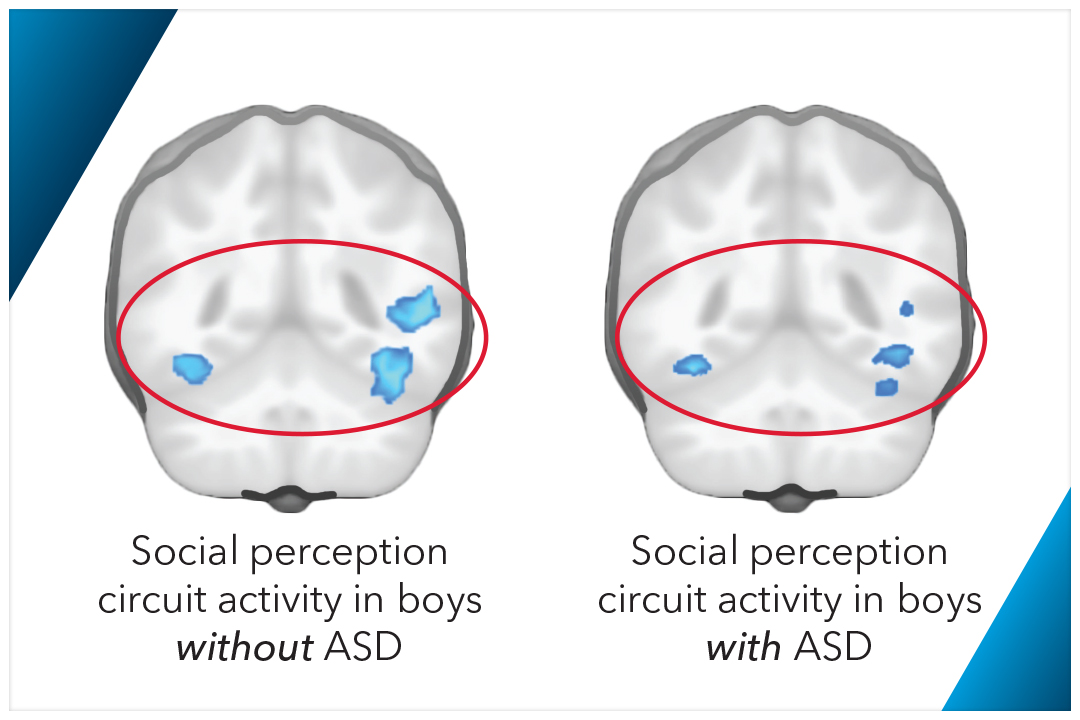
Credit: George Washington University "This kind of imaging can help us answer the question, 'On day one of treatment, will this child benefit from a 16-week behavioral intervention?'" Dr. Pelphrey said. "Answering that question will help parents save time and money on diagnosis and treatments."
Following the study, Dr. Pelphrey and his colleagues will test their findings at the next level: studying a larger pool of people with autism and other neurological disorders in collaboration with Children's National Medical Center to see if the scan can successfully distinguish ASD from other disorders and track treatment progress.
The authors emphasized that this research is still in the earliest days, pointing out that doctors' offices and most hospitals do not have the specialized imaging equipment necessary to carry out the brain scans used by the team involved in this study.
"To really help patients we need to develop inexpensive, easy-to-use techniques that can be applied in any group, including infants and individuals with severe behavioral problems," said Dr. Björnsdotter. "This study is a first step toward that goal."
While this method currently only works for boys with autism, the researchers are leading a large-scale, nationwide study of girls with autism to identify equivalent techniques that will work for them. The group expects to have the initial results from that study later this year.
Read the original article Here
- Comments (0)
- Social Decision-Making in Autism
- By Jason von Stietz, M.A.
- December 23, 2015
-
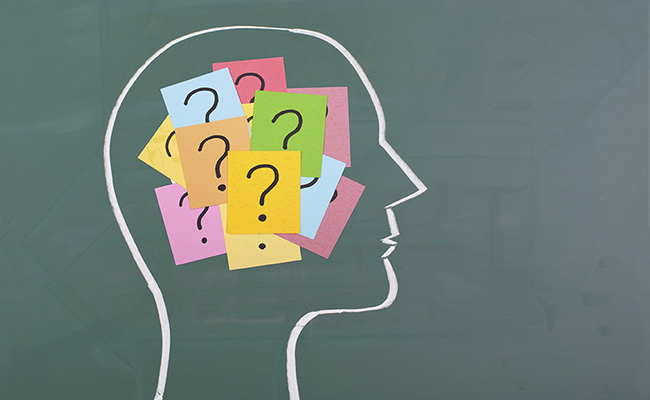
Getty Images It is widely believed that individuals with autism lack the capacity to read social cues. However, recent findings suggest autism affects not how social information is processed but how the information is used in decision making. The study was discussed in a recent article in MedicalXpress:
Scientists at the Max Planck Institute of Psychiatry in Munich together with colleagues in Cologne and Zürich have used mathematical models to explain differences in social behaviour associated with autistic personality traits. They show that autistic traits do not – as previously thought – stop the individual from "reading" social cues, but instead affect how social information is used in making decisions. This new understanding provides a new basis for future research that will improve therapies for people with autism.
Autism spectrum disorder is a common psychiatric disorder that is characterized from childhood onwards by major impairments in social interaction and communication. About one half of autistic individuals are "high-functioning" as they have no intellectual impairment. However, all are severely limited in their social and professional life, which is why so many people with autism also suffer from depression. It has been suggested that autistic individuals may not "read" social cues and as a result do not respond to them properly. Alternatively, it has been suggested they are unable to empathize, thereby leading to social problems.
Leonhard Schilbach, consultant psychiatrist and Research Group leader at the Max Planck Institute of Psychiatry, explains "we have shown in this study that autistic trait-related differences in social behaviour are not due to a general inability to process social cues, but are related to the way social information is taken into account during decision-making".
It is thought that reading cues and making decisions involve an interplay between "expectations" generated in higher brain areas and signals from lower sensory brain areas. Normally, the behaviour of others that causes the sensory signal is interpreted in comparison to such "expectations". This allows individuals to regulate their behaviour in a context-sensitive and socially adequate way. In contrast to this, autism might be the result of an imbalance in this interplay, with a stronger reliance on sensory signals.
Computational modeling uses mathematical descriptions to characterize the variables that underlie social behaviour. Previous research has shown that humans do not only "read" the overt behaviour of others, but also the intentions that underlie and motivate the behaviour and use this information when making. Lead scientist Leonhard Schilbach explains, "we used a computational approach to investigate whether differences in social decision-making observed in people who are high or low in autistic traits are related to an inability to monitor others' intentions".
Schilbach and colleagues found that higher autistic traits do not impair the ability to process social information per se, but rather how this information influences decision-making. Furthermore, it was observed that individuals high in autistic traits found it harder to optimally use social information during unpredictable situations. It is hoped that this new insight into the autism spectrum will provide improved interventions for patients. Furthermore, the computational approach used in this study could also help to characterize social difficulties in other psychiatric disorders.
Read the article Here
- Comments (1)
- Cortical and Subcortical Synchrony Involved in Hypersensitivity to Sensory Stimuli in ASD
- By Jason von Stietz
- June 23, 2015
-

Photo Credit: Getty Images A well known symptom of autism spectrum disorder (ASD) is hyper sensitivity to sensory stimuli. Researchers at the Netherlands Institute for Neuroscience examined fMRI data from the largest neuroimaging database on ASD. Findings indicated that highly synchronized activity between cortical and subcortical brain activity is related to hypersensitivity to sensory stimuli in people with ASD. A recent article in NeuroScientistNews discusses the study:
The increased interaction between cortical and subcortical brain regions highlights the central role of hypersensitivity and other sensory symptoms in defining autism spectrum disorder (ASD). This is presented in research performed by a team led by Christian Keysers and Leonardo Cerliani at the Netherlands Institute for Neuroscience in Amsterdam. This finding provides a key to understand the often underestimated sensory hypersensitivity in autism and to seed a scientific understanding of how to tackle this hypersensitivity. The research is published in JAMA Psychiatry.
People with ASD are known for their unusual behavior in the social environment. Moreover, they often report other traits, linked to the sensory environment: for instance the ability to perceive small details in a picture or to detect a very soft sound coming from a distance. "This hypersensitivity, however, is not always a gift: being captured by the myriad of sensory stimuli we continuously receive from the environment can be distracting and even overwhelming, and prevents us to focus on what we care most," says Cerliani. The scientists present in their research that increased interaction between the cortical ad subcortical brain regions is at the root of this hypersensitivity.
Brain activity
Brain regions that are strongly coupled have brain activity that goes up and down together, even while relaxing, while regions that are not coupled will have their brain activity fluctuate independently from each other. By comparing how this spontaneous brain activity synchronizes across various brain regions the team identified an abnormally high synchrony between the sensory cortices involved in perception and subcortical regions relaying information from the sensory organs to the cortex. They found that a higher synchrony was associated with a higher severity of autistic traits.
"During the development from childhood to adolescence, the spontaneous activity of cortical regions involved in basic sensory perception decouples from the activity of subcortical structures relaying sensory information from the sensory organs to the cortex," explains Keysers. "This decoupling is thought to reflect the increasing ability to block out irrelevant sensory information from perception, allowing people to focus on their stream of thoughts and actions. In ASD this process appears to be altered: their sensory cortex appears to be abnormally coupled to subcortical structures."
Large database
The team made these observations using resting-state functional magnetic resonance imaging (fMRI) data from the largest neuroimaging database on ASD aggregated so far: the ABIDE, founded and coordinated by Dr. Adriana Di Martino, Dr. Stuart Mostofsky and Dr. Michael Milham. The team of Keysers and Cerliani also contributed to the aggregation of this database with the neuroimaging data acquired by Dr. Marc Thioux.
Autism Spectrum Disorder
ASD is an umbrella name for a number of developmental disorders, including classic autism and Asperger syndrome. The number of people with ASD is almost eightfold in the last twenty years and is seen in more than 1% of the children.
Read the original article Here
- Comments (0)
- Brain Networks in People with Autism
- By Jason von Stietz
- April 3, 2015
-
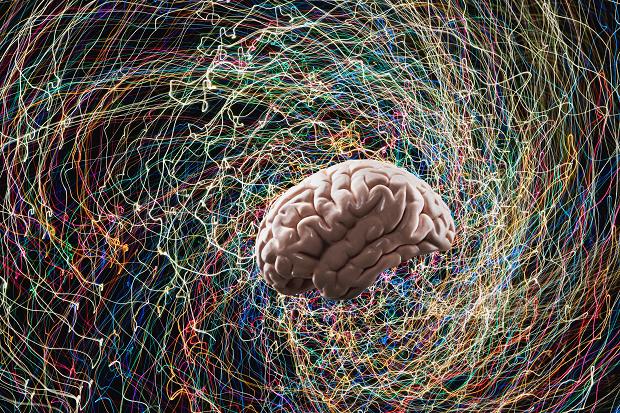
Photo Credit: Getty Images The human brain is composed of trillions of neurons, which interact to form complex signaling networks. Researchers at the University of Miami have examined how these networks are differ in the brains of people with autism as compared to the brains of typically developing people. A recent article in NeuroScientistNews discusses the study:
The field of autism research has tried to find a central theory underlying brain changes associated with autism spectrum disorder (ASD). Now, a new study shows that individuals with the disorder exhibit different patterns of brain connectivity, when compared to typically developing (TD) individuals and that these patterns adjust as the individual ages.
"Our findings suggest that developmental stage must be taken into account to accurately build models that show how the brains of individuals with autism differ from neurotypical individuals," said Lucina Uddin, assistant professor of Psychology at the University of Miami (UM) College of Arts & Sciences and corresponding author of the study. "We believe that taking a developmental approach to examining brain connectivity in autism is critical for predicting response to treatment in young children with ASD."
Our brain is composed of more than one trillion neurons, interacting with one another to form complex signaling networks. Previous studies have identified patterns of both functional hypo- and hyper-connectivity of these signaling networks in individuals with ASD. The current study, titled "Developmental Changes in Large-Scale Network Connectivity in Autism," attempts to explain these conflicting results, by indicating that the developmental stage of the individual plays a key role in the findings. The study is published in the journal NeuroImage: Clinical.
Key findings of the study include:
♦ Children (7 to 11) with ASD, exhibit hyper-connectivity within large-scale brain networks, as well as decreased between-network connectivity, when compared to TD children.
♦ Adolescents (age 11 to 18) with ASD do not differ in within network connectivity, but have a decrease in between network connectivity, from TD adolescents.
♦ Adults (older than 18) with ASD show neither within, or between-network differences in functional connectivity compared with typical adults.The findings suggest that alterations in the networks of the brain's cortex may trigger the complex behavioral characteristics observed in individuals with ASD.
"This study helps us understand the functional organization of brain networks and how they change across the lifespan in autism," said Jason S. Nomi, postdoctoral fellow in the Department of Psychology at UM and lead author of the study.
The researchers are currently working to explicitly characterize an important developmental transition in individuals with autism: the onset of puberty.
Read the original article Here
- Comments (0)
- Do People with Autism See Faces Differently?
- By Jason von Stietz
- December 5, 2014
-
.jpeg)
People with autism have difficulty socializing and connecting with others? Recognizing facial expressions is a key component to social activity. Is it possible that people with autism evaluate facial expressions differently? Researchers investigated the capacity for people with autism to recognize facial expressions in photographs of people as well as in pictures of synthetic faces. NeuroScientistNews discussed the study in a recent article:
The way people with autism spectrum disorder (ASD) gather information - not the judgement process itself - might explain why they gain different perceptions from peoples' faces, according to a new study from Hôpital Rivière-des-Prairies and the University of Montreal. "The evaluation of an individual's face is a rapid process that influences our future relationship with the individual," said Baudouin Forgeot d'Arc, lead author of the study. "By studying these judgments, we wanted to better understand how people with ASD use facial features as cues. Do they need more cues to be able to make the same judgment?"
The study was conducted in collaboration with a team from the Hôpital Robert-Debré in Paris, who recruited 71 individuals, including a control group (n=38) and an ASD group (n=33), without intellectual disabilities. The group was divided into aged-matched subgroups: children (mean age 10 years) and adults (mean age 33 years) The researchers presented 36 pairs of photographic and synthetic images to the participants, and evaluated their social judgment by asking them to indicate which emotionally neutral faces appeared "kind" to them.
When photographic images of neutral faces were presented, the judgment of ASD participants was mixed compared to participants in the control group - the choices of the ASD participants were not predictable from one subject to another. However, the researchers found no difference between the groups when participants were presented with synthetic images, which were nevertheless created based on the characteristics of the photographic images previously shown. Moreover, when the synthetic image pairs contained less useful judgment clues (less pronounced facial features), the results for the two groups were influenced in the same way by this difficulty.
The identical results of the two groups when they viewed synthetic images suggest that it is not the judgment process itself that is different: judging whether a person seems "kinder" than another can be accomplished similarly in participants with or without ASD. However, the differences observed when they viewed photographic images suggest that the way they gather information about people's faces is critical.
"We now want to understand how the gathering of cues underpinning these judgments is different between people with or without ASD depending on whether they are viewing synthetic or photographic images. Ultimately, a better understanding of how people with ASD perceive and evaluate the social environment will allow us to better interact with them," said Forgeot d'Arc.
Read the original article Here
- Comments (0)
- Researchers Tie Social Behavior to Activity in Specific Brain Circuit
- By Jason von Stietz
- June 27, 2014
-
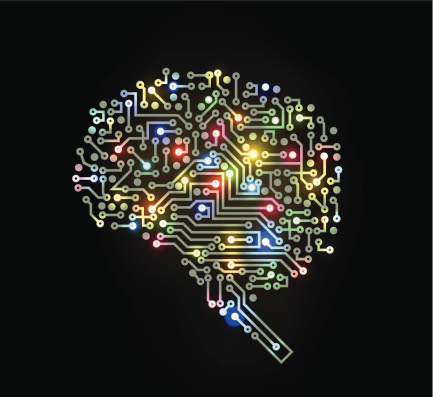
Photo Credit: Getty Images Can social behavior be linked back to specific wiring in the brain? Researchers at Stanford University examined the relationships between a specific circuit in the brain and the tendency of mammals to interact socially. When researchers stimulated this circuit in mice they instantly engaged in social behavior with unfamiliar mice. In contrast, when researchers inhibited this circuit the mice refrained from social activity and ignored the other mice. Medical Xpress discussed the study in a recent article:
The new findings, to be published June 19 inCell, may throw light on psychiatric disorders marked by impaired social interaction such as autism, social anxiety, schizophrenia and depression, said the study's senior author, Karl Deisseroth, MD, PhD, a professor of bioengineering and of psychiatry and behavioral sciences. The findings are also significant in that they highlight not merely the role of one or another brain chemical, as pharmacological studies tend to do, but rather the specific components of brain circuits involved in a complex behavior. A combination of cutting-edge techniques developed in Deisseroth's laboratory permitted unprecedented analysis of how brain activity controls behavior.
Deisseroth, the D.H. Chen Professor and a member of the interdisciplinary Stanford Bio-X institute, is a practicing psychiatrist who sees patients with severe social deficits. "People with autism, for example, often have an outright aversion to social interaction," he said. They can find socializing—even mere eye contact—painful.
Deisseroth pioneered a brain-exploration technique, optogenetics, that involves selectively introducing light-receptor molecules to the surfaces of particular nerve cellsin a living animal's brain and then carefully positioning, near the circuit in question, the tip of a lengthy, ultra-thin optical fiber (connected to a laser diode at the other end) so that the photosensitive cells and the circuits they compose can be remotely stimulated or inhibited at the turn of a light switch while the animal remains free to move around in its cage.
Using optogenetics and other methods he and his associates have invented, Deisseroth and his associates were able to both manipulate and monitor activity in specific nerve-cell clusters, and the fiber tracts connecting them, in mice's brains in real time while the animals were exposed to either murine newcomers or inanimate objects in various laboratory environments. The mice's behavioral responses were captured by video and compared with simultaneously recorded brain-circuit activity.
In some cases, the researchers observed activity in various brain centers and nerve-fiber tracts connecting them as the mice variously examined or ignored one another. Other experiments involved stimulating or inhibiting impulses within those circuits to see how these manipulations affected the mice's social behavior.
To avoid confusing simple social interactions with mating- and aggression-related behaviors, the researchers restricted their experiments to female mouse pairs.
The scientists first examined the relationship between the mice's social interactions and a region in the brain stem called the ventral tegmental area. The VTA is a key node in the brain's reward circuitry, which produces sensations of pleasure in response to success in such survival-improving activities as eating, mating or finding a warm shelter in a cold environment.
The VTA transmits signals to other centers throughout the brain via tracts of fibers that secrete chemicals, including one called dopamine, at contact points abutting nerve cells within these faraway centers. When dopamine lands on receptors on those nerve cells, it can set off signaling activity within them.
Abnormal activity in the VTA has been linked to drug abuse and depression, for example. But much less is known about this brain center's role in social behavior, and it had not previously been possible to observe or control activity along its connections during social behavior.
Deisseroth and his colleagues used mice whose dopamine-secreting, or dopaminergic, VTA nerve cells had been bioengineered to express optogenetic control proteins that could set off or inhibit signaling in the cells in response to light. They observed that enhancing activity in these cells increased a mouse's penchant for social interaction. When a newcomer was introduced into its cage, it came, it saw, it sniffed. Inhibiting the dopaminergic VTA cells had the opposite effect: The host lost much of its interest in the guest.
Read the Full Article Here
- Comments (1)


 Subscribe to our Feed via RSS
Subscribe to our Feed via RSS